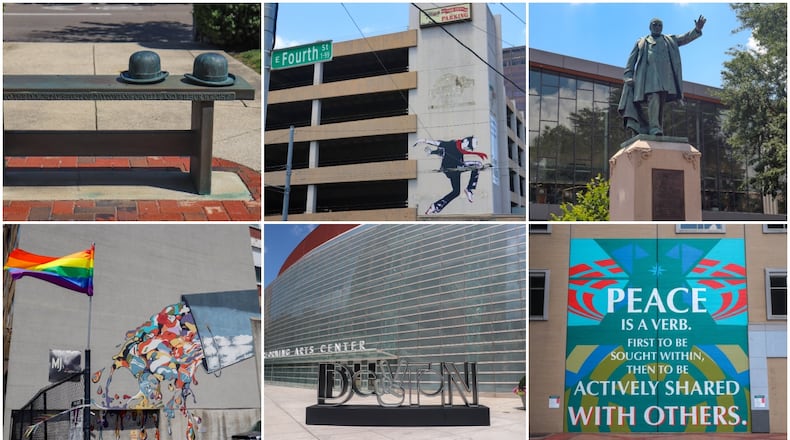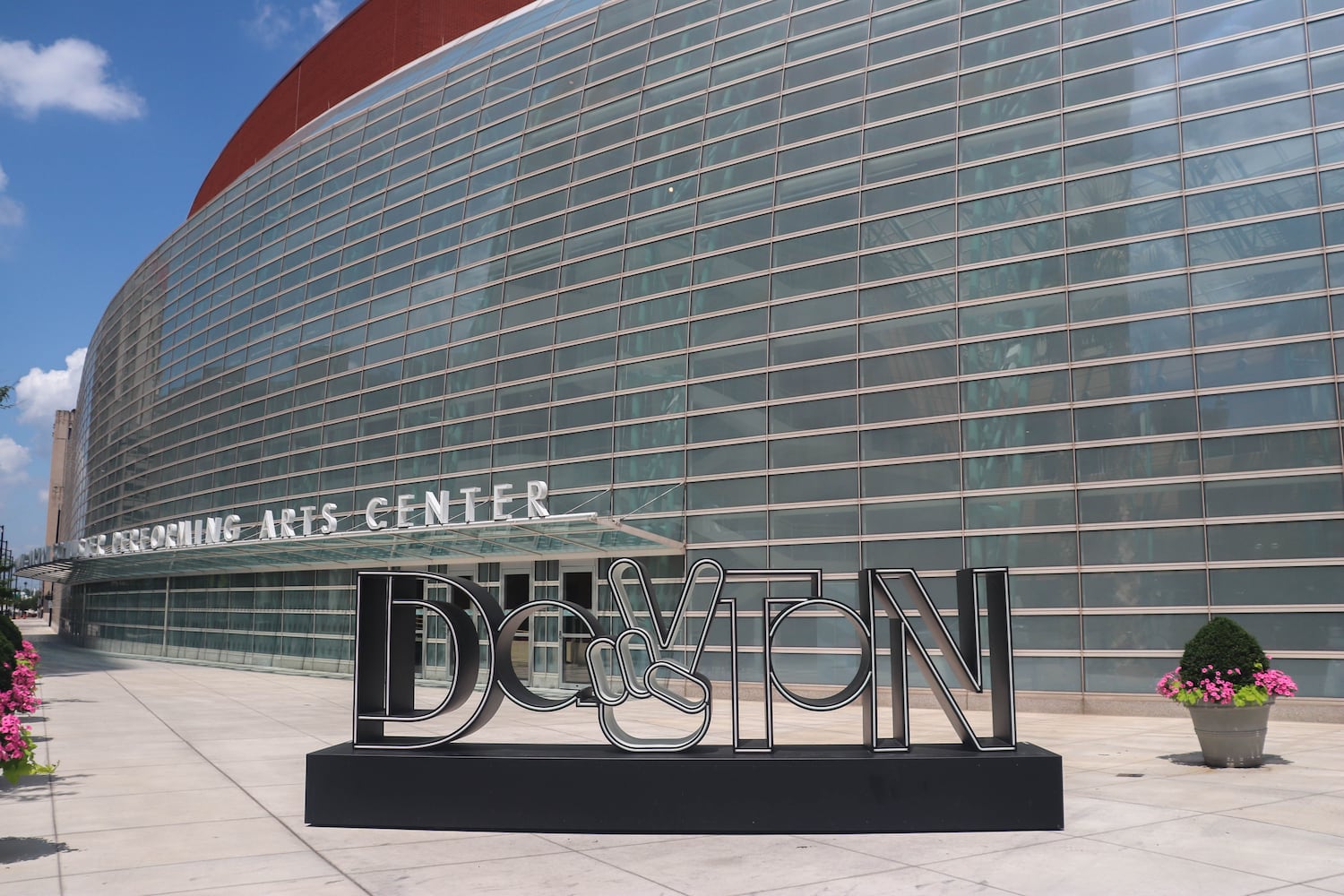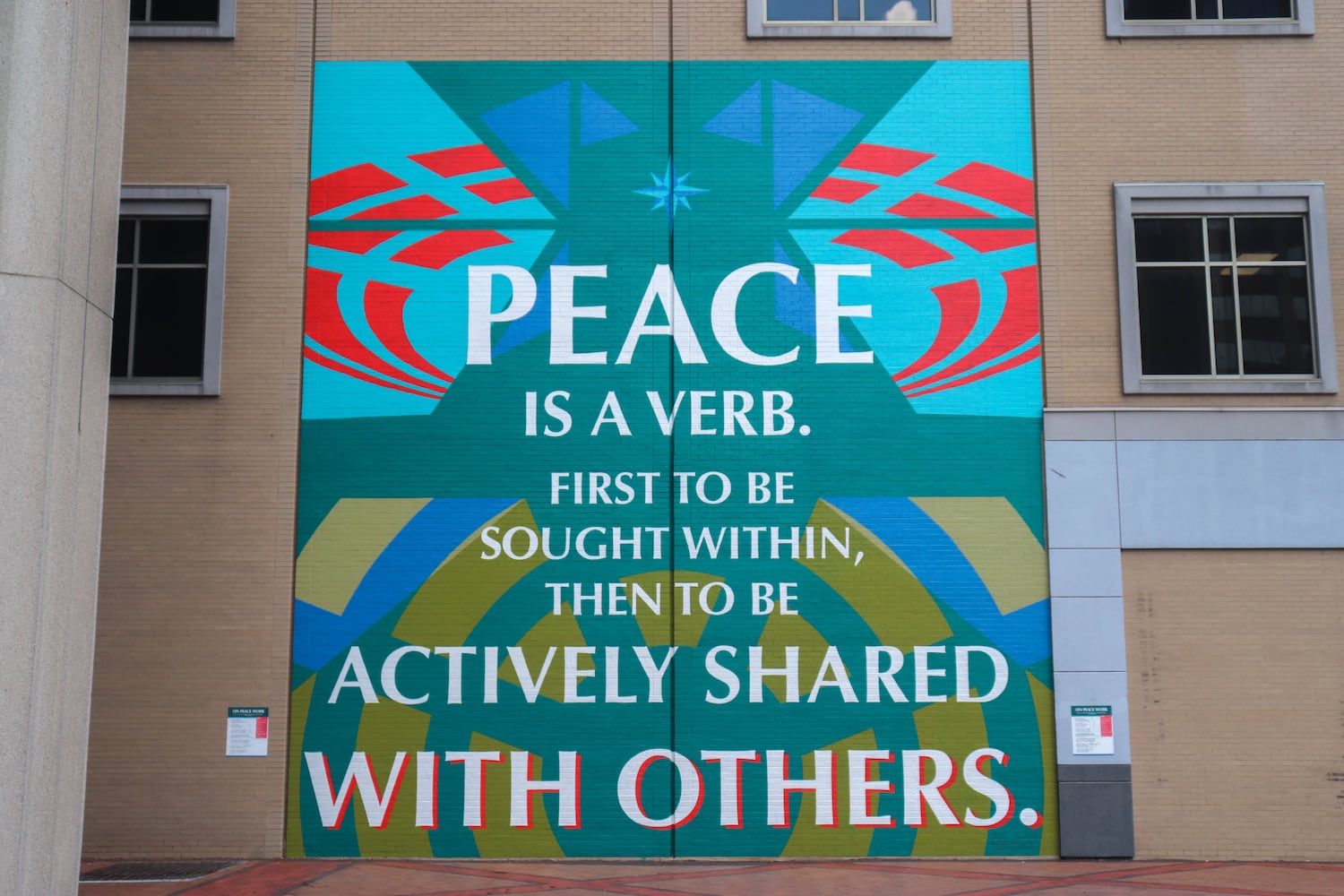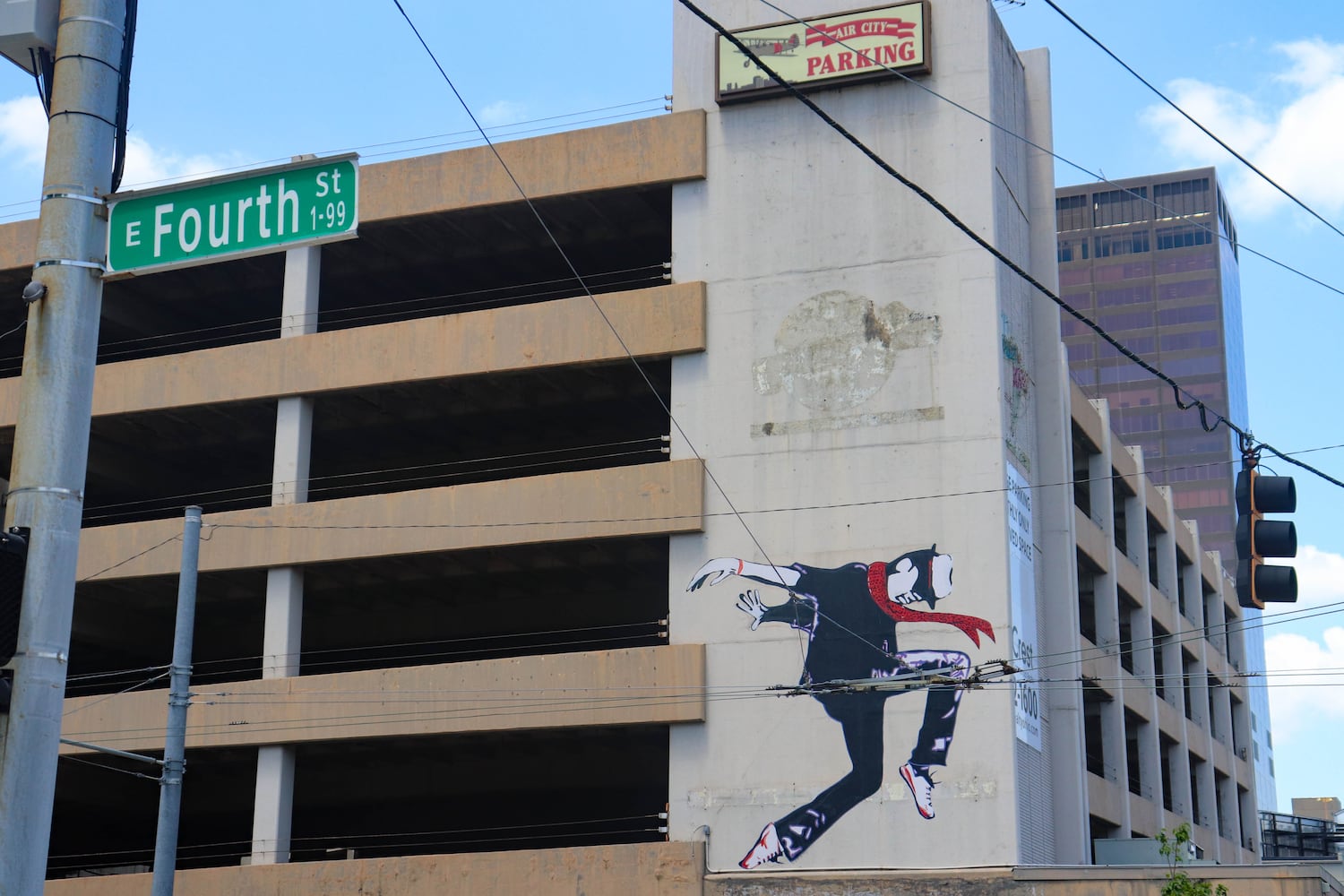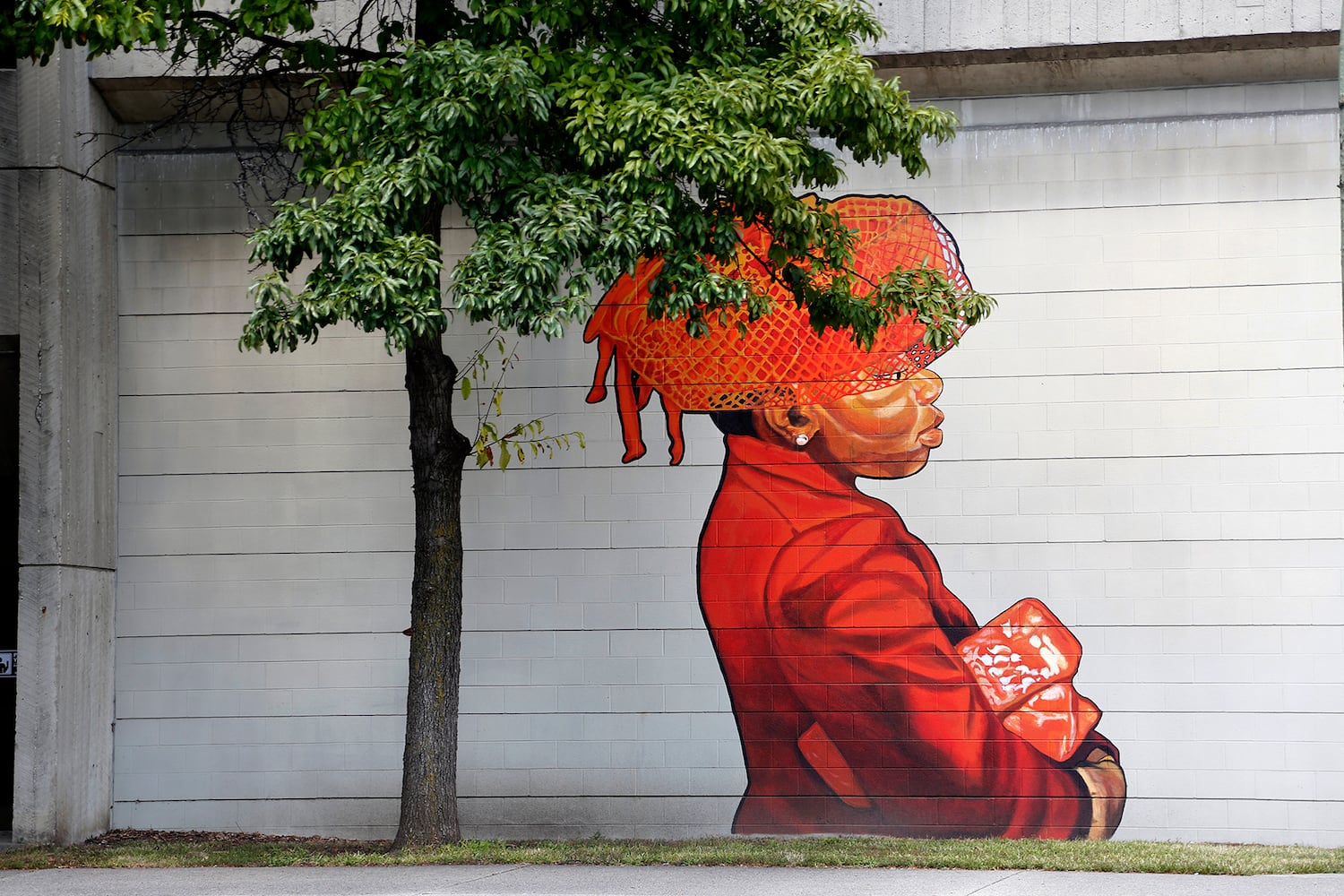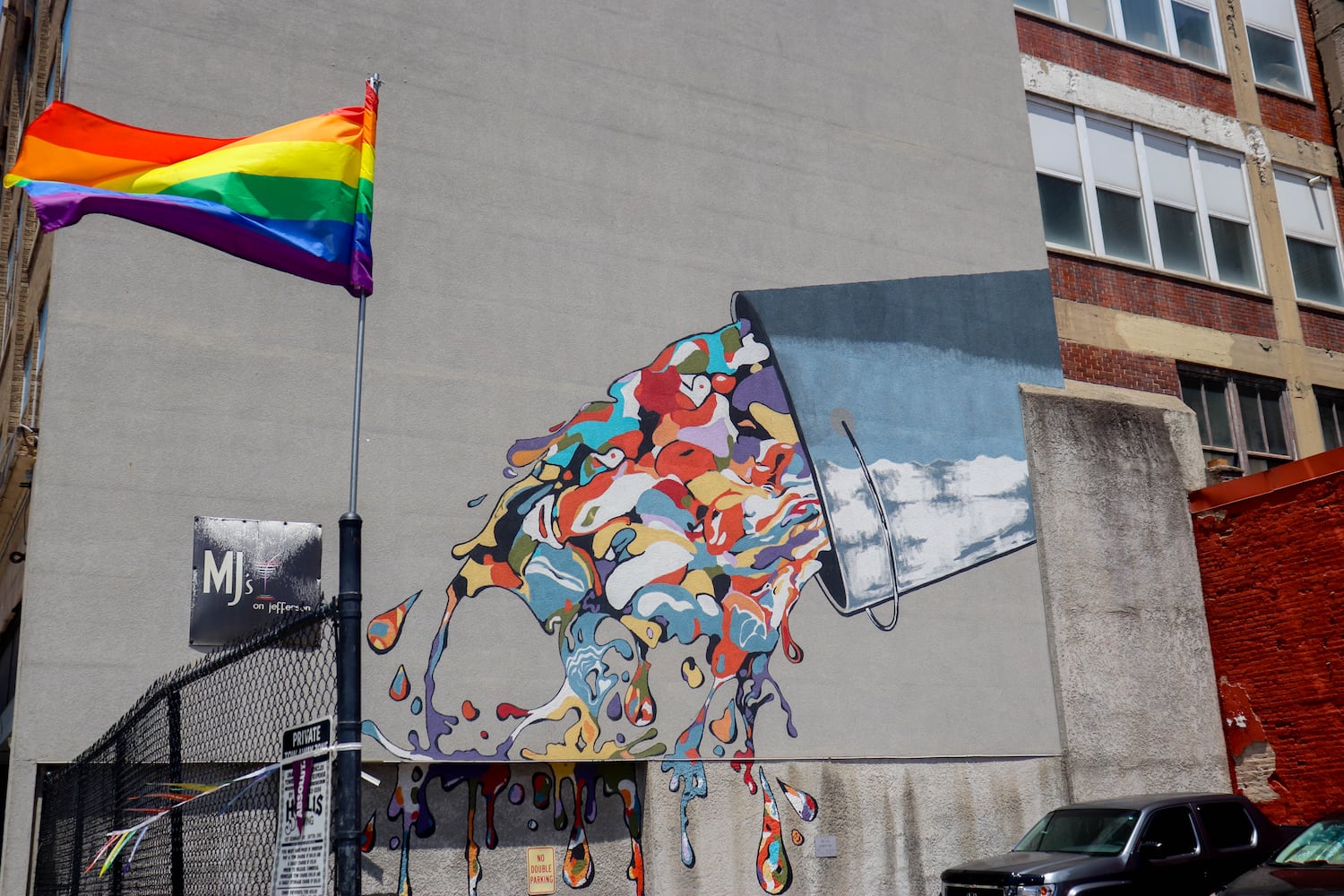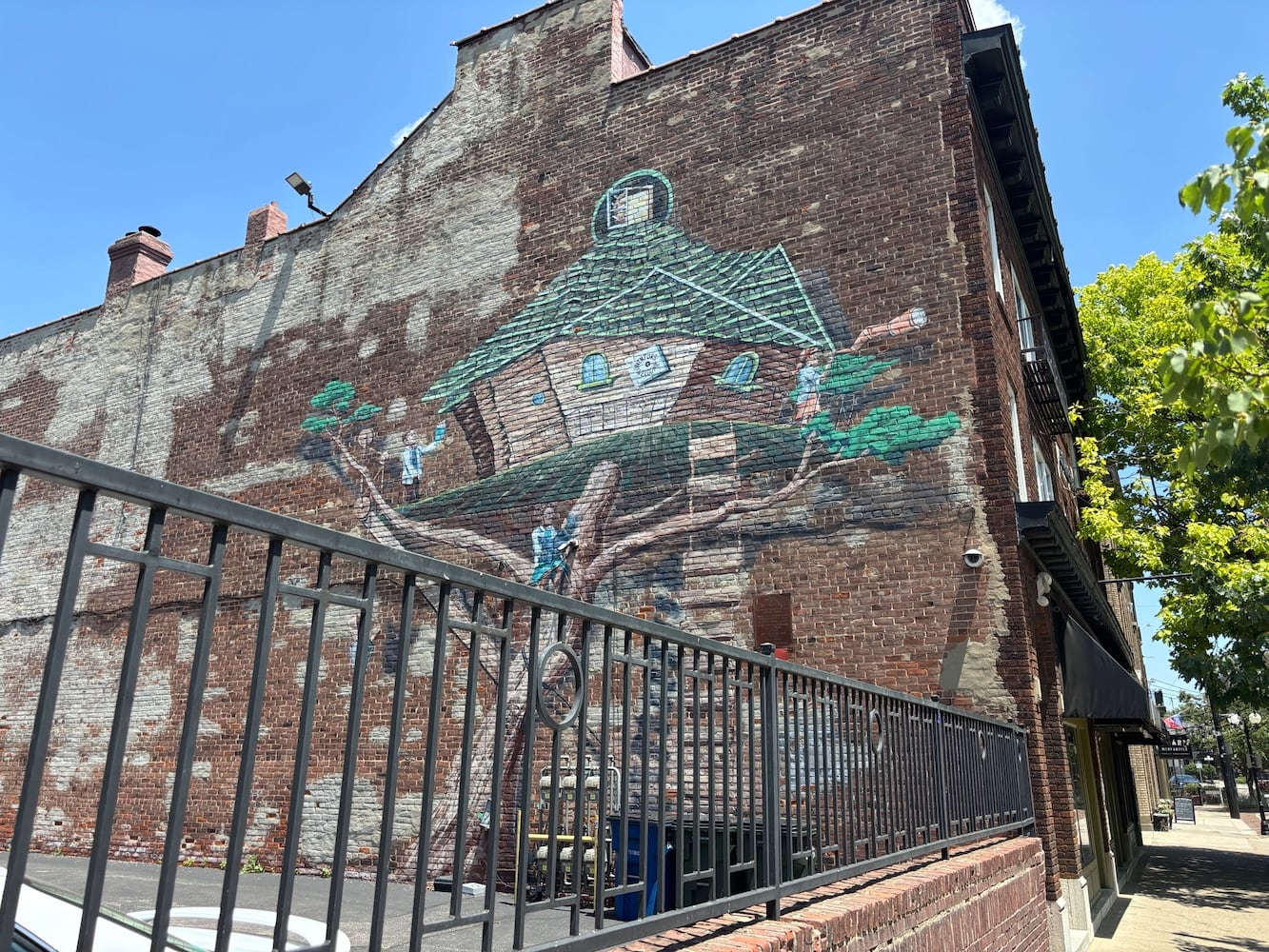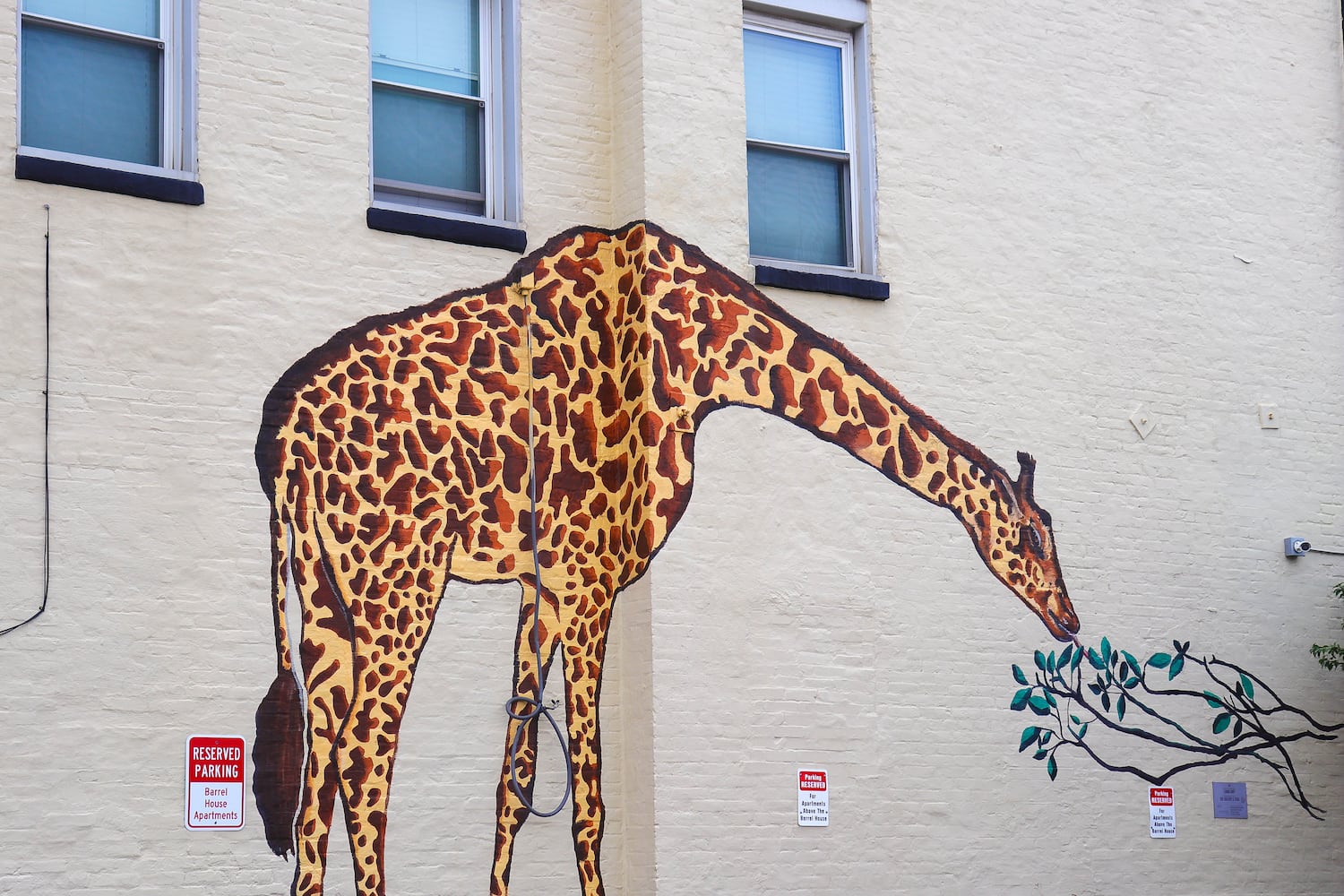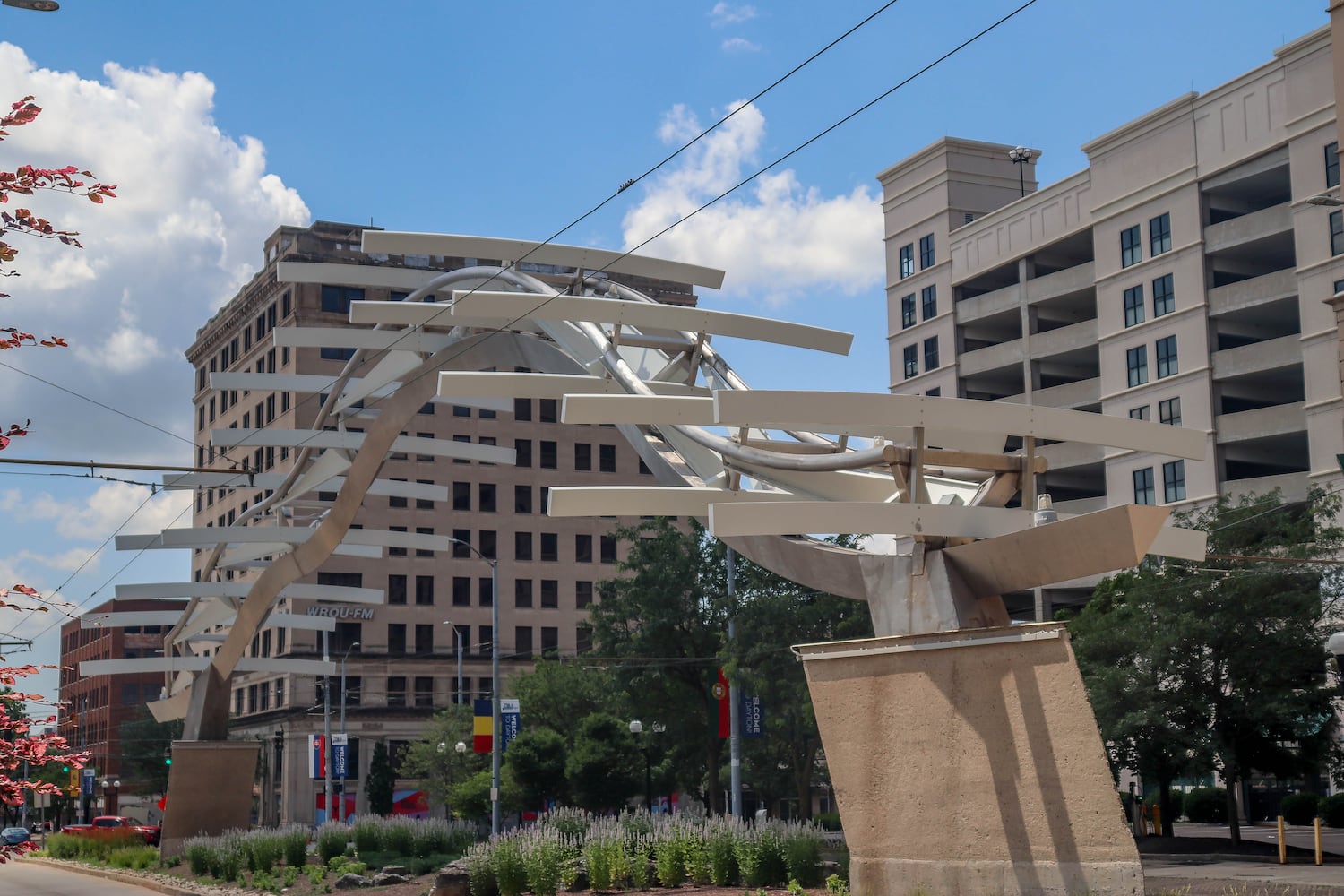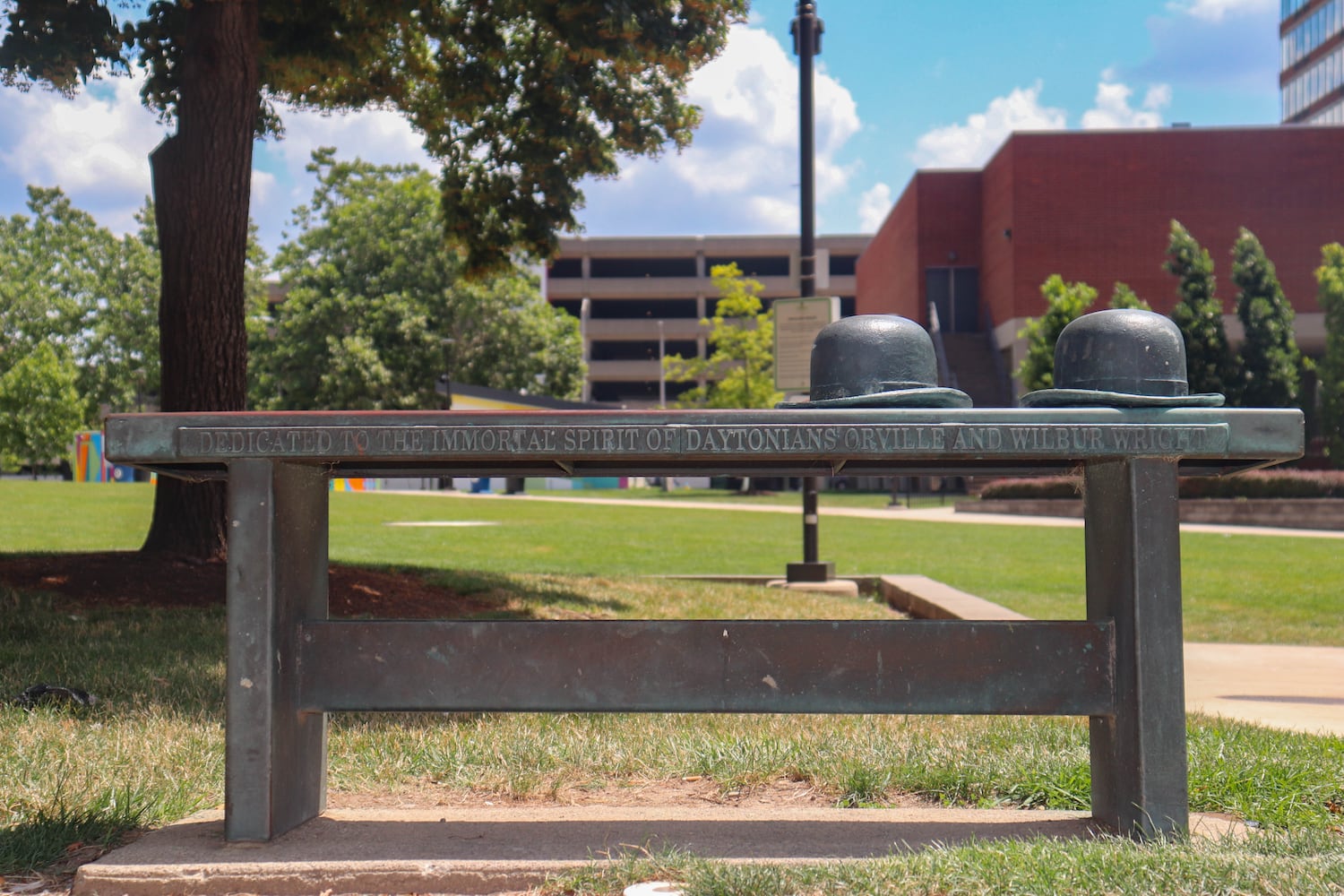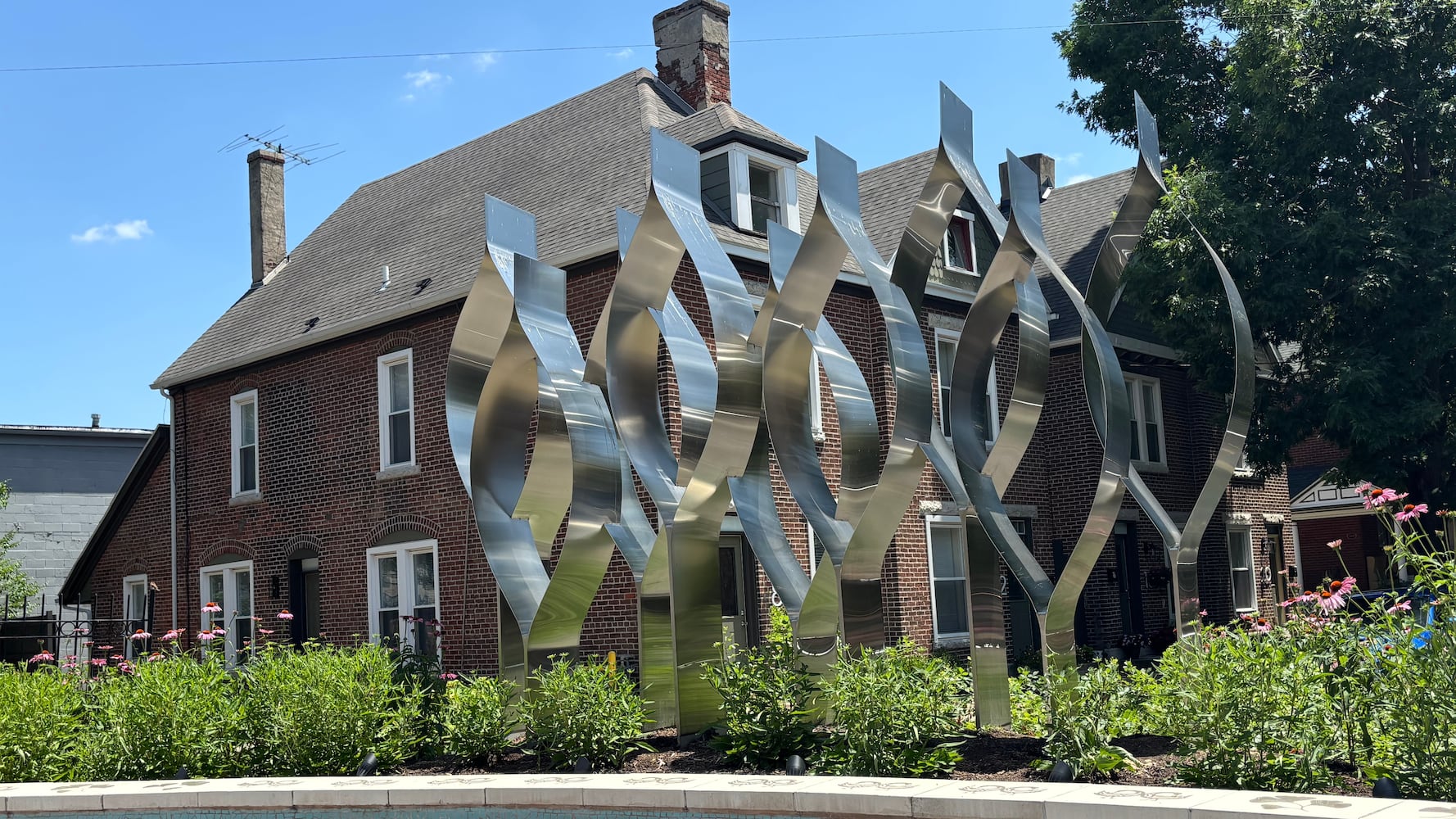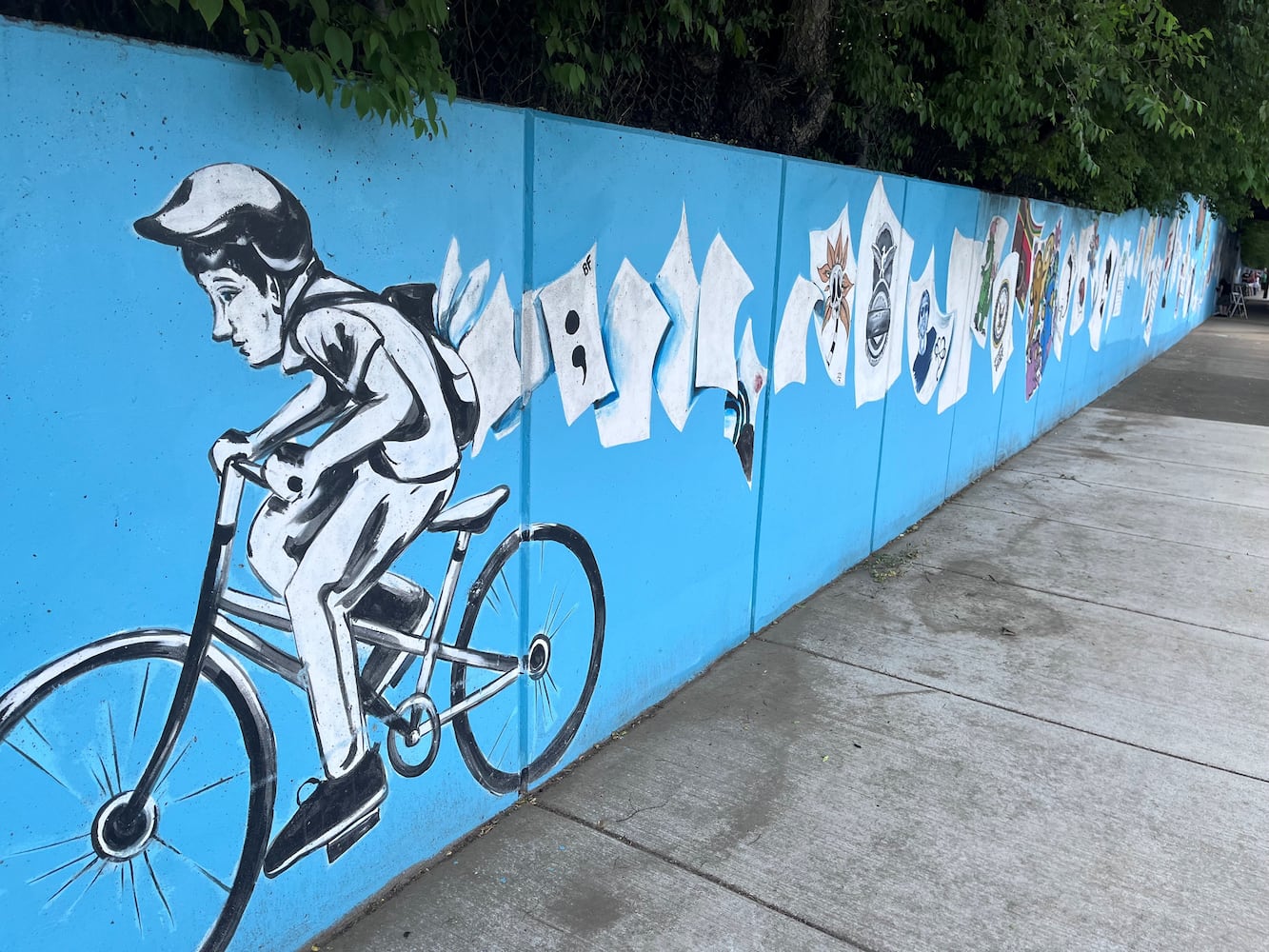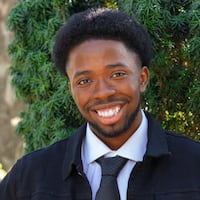They create a growing tapestry and another reason to visit downtown.
In the words of Tiffany Clark, local artist and founder of Mural Machine who completed her 100th mural in 2019, “We’re full of inventors and creators, and I think the walls in our public spaces need to reflect that.”
NATO Peace Works
Credit: Bryant Billing
Credit: Bryant Billing
The Dayton Peace Sign is one of the latest pieces added to the downtown landscape.
A collaboration between Congressman Mike Turner, the Downtown Dayton Partnership and local creative agency Real Art, the piece was presented at RiverScape MetroPark on May 15 to commemorate the 30th anniversary of the Dayton Peace Accords and the city’s hosting of the 2025 NATO Parliamentary Assembly Spring Session.
“The new Dayton Peace Sign ... stands as a powerful permanent symbol of what we can accomplish when we come together in pursuit of a common goal,” said Turner. “It also serves as a lasting reminder of the shared peace, unity, and security we continue to strive for.”
After the NATO Assembly, the sign was moved to the front of the Benjamin & Marian Schuster Performing Arts Center on May 29. It’s the hope of Real Art that the sign becomes a Dayton landmark for years to come.
In addition to the Dayton Peace Sign, a mural titled “On Peace Work” was presented at Courthouse Square the day before the NATO Assembly.
The piece was commissioned by the DDP, designed by artists Atalie Gagnet and Jennifer Ustick and curated by local poet Sierra Leone.
The title of the mural shares the title of the poem, “Peace is a Verb,” that was presented alongside it.
The mural includes the poem’s epigraph, written by Alice Young-Basora, executive director of the International Peace Museum, and reads: “Peace is a verb. First to be sought within, then to be actively shared with others.”
Urban Art Intersections
In 2016, the DDP began an initiative called Urban Art Intersections. Partnering with other local businesses and organizations, five small murals were painted downtown.
Laura Woeste, director of strategic projects for the DDP, said many of the murals downtown wouldn’t be possible without the support of sponsors.
“We’re continuing to explore all those different ways to fund art because I’d love to do more of it,” Woeste said. “More art inspires more art.”
Credit: Photo by Ismael David Mujahid
Credit: Photo by Ismael David Mujahid
The project received grant funding from the Ohio Arts Council and from the city of Dayton.
Since then, more murals have been added downtown as part of the project’s second round.
In addition to the murals, the UAI program debuted “ArtWraps” in 2022. The project served as a way to turn utility boxes around the downtown area into works of art by wrapping them in artistically designed vinyl. A total of 30 were completed by the end of ArtWraps’ second phase in 2023.
“(Urban Art Intersections) can mean murals,” Woeste said. “It can mean electrical boxes. It might mean something different next year. We’re always looking at what our city’s doing to add more art.”
A map of all the ArtWraps downtown can be found on the DDP’s website.
Presidential Monuments
In downtown Dayton, there isn’t just one, but two sculptures of past presidents.
The William McKinley Monument, erected in 1910, was one of Dayton’s first public monuments.
It was designed by August Lukeman, a sculptor known for his historical monuments, and was cast in the foundry of John Williams in New York. The $6,000 statue is an exact copy of another in North Adams, Massachusetts.
The original stood in front of the Dayton Metro Library, facing Third Street, but was stolen. It was then replaced by the Dayton Rotary Club and later moved to its current location in Cooper Park in 1961.
The second presidential sculpture captures the likeness of Abraham Lincoln.
Sculpted by Mike Major, this statue was raised in 2016 to commemorate the 157th anniversary of Lincoln’s visit to Dayton where he gave an anti-slavery speech on the steps of the Old Montgomery County Courthouse.
The statue was commissioned by the Lincoln Society of Dayton using $250,000 in contributions they gathered over the course of a decade.
Wright Brothers
Orville and Wilbur Wright influence not only Dayton’s aviation history, but its art as well.
Many may have seen the several Wright Brothers Benches scattered across the Dayton area.
These benches, all designed by artist David E. Black, are a tribute to the bench used as a rest for the right wing before the first powered flight in Kitty Hawk, North Carolina. Atop each bench are two bowler hats, a style of hat the brothers were known for wearing.
There are nine benches in the city of Dayton with the first being dedicated on July 4, 1996. Two of these benches reside in the downtown area, one in front of the Engineers Club in Dayton and the other at Dave Hall Plaza.
The Wright Brothers Benches aren’t the only David Black pieces that can be found downtown. His largest piece of downtown art, the “Flyover,” was sculpted in celebration of Dayton’s 200th anniversary and was officially dedicated on the same day as the Wright Brothers Benches.
The $415,000 sculpture is 120 feet long and depicts the brothers’ first flight, each curve tracing Orville’s flight path that day.
It sits in the center of Main Street between Fourth and Fifth street.
In Memoriam
Clark said it’s the job of a public artist to make something for people to connect with.
“I just need to be able to create a positive message that brings people back to the locations over and over again,” Clark said.
The “Seed of Life” Memorial, in a plaza next to The Trolley Stop, is dedicated to the nine people who lost their lives in a mass shooting in the Oregon District on Aug. 4, 2019.
The team chosen to create the memorial consisted of architects, poets, sculptors, designers and more. Terry Welker, architect, sculptor and urban designer of the project, spoke about the memorial site.
“The first thing we did in order to make a place of healing was heal the place,” Welker told this news outlet.
A mural that is an ongoing project is the “Love You” mural, located along Keowee Street. To honor and remember those who have attempted or died by suicide, the piece’s empty pages are used for community members to paint their own memorials onto the wall.
“Every once in a while you can drive past the Love You Mural and see balloons taped to it, or ‘Happy Birthday’ streamers,” Clark said.
Dozens more art pieces can be found across the downtown landscape. From the Oregon District that hosts murals around every corner to RiverScape MetroPark that is home to a collection of sculptures that pull influence from Dayton’s many inventions.
Each piece adds to downtown’s appeal, attracting new and returning visitors.
With no exact number and new pieces always in the works, Daytonians continues to reinvent the city in color and hue.
“I think the residents really love it because it makes downtown feel more like a neighborhood and can add a lot of vibrancy outside their front window or on their walk from their home,” said Woeste.
